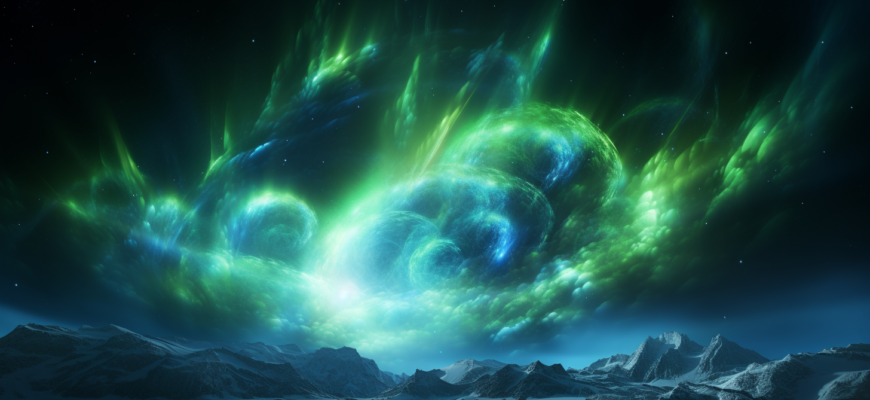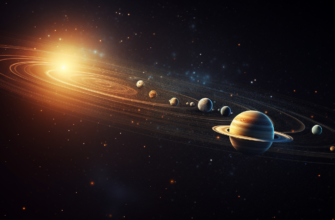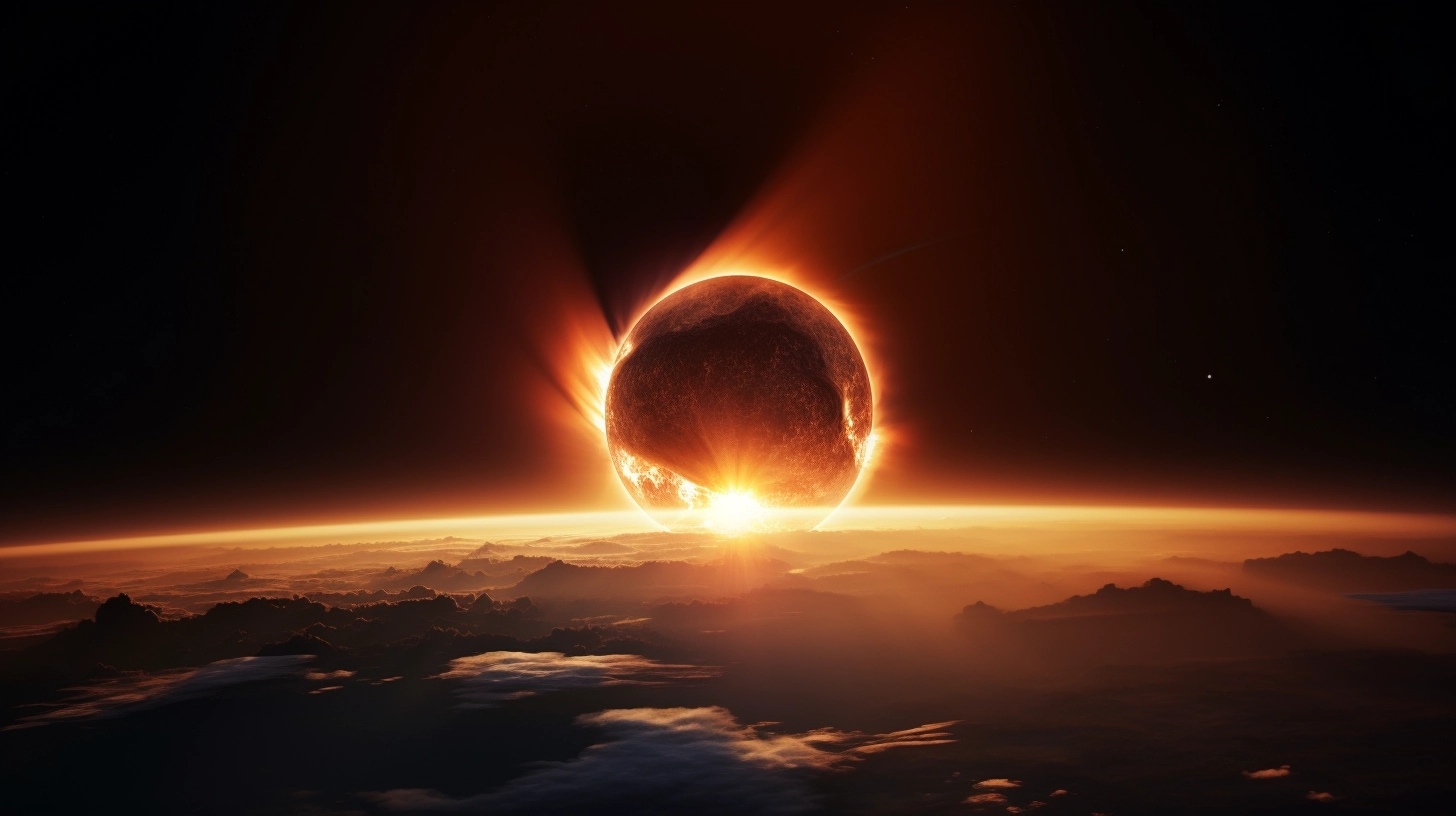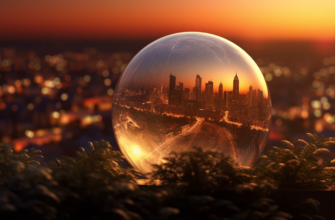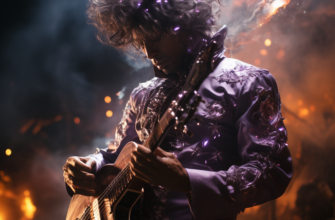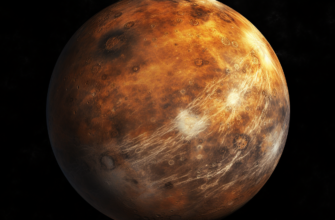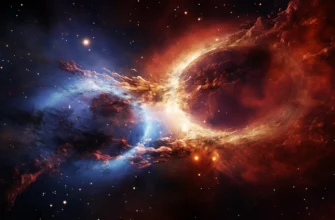Ribbons of color dance across the night sky – emerald, violet, crimson – in a silent spectacle known as the northern lights. For millennia, humans have gazed upward in awe at these radiant displays. The lights sparked myths as ancient cultures tried to explain their origins. Today, the aurora continues to lure travelers eager for a glimpse of this dazzling phenomenon.
This cosmic light show reveals the relationship between the sun and Earth. It shows the power of our star and the crucial role of our planet’s magnetic field. As winter approaches, prepare to witness one of nature’s most magnificent performances. Let’s explore the allure of the northern lights and their scientific secrets. The stage is set for a dance between sunlight and our planet that illuminates the heavens.
- What Are the Northern Lights?
- Key colors and what causes them:
- Where To See the Northern Lights
- When To See the Northern Lights
- Ancient History and Myths
- Early Observations
- Myths and Legends
- Science of the Aurora
- Early Theory
- Modern Understanding
- Viewing Tips and Techniques
- Aurora in Culture
- Planning Aurora Expeditions
What Are the Northern Lights?
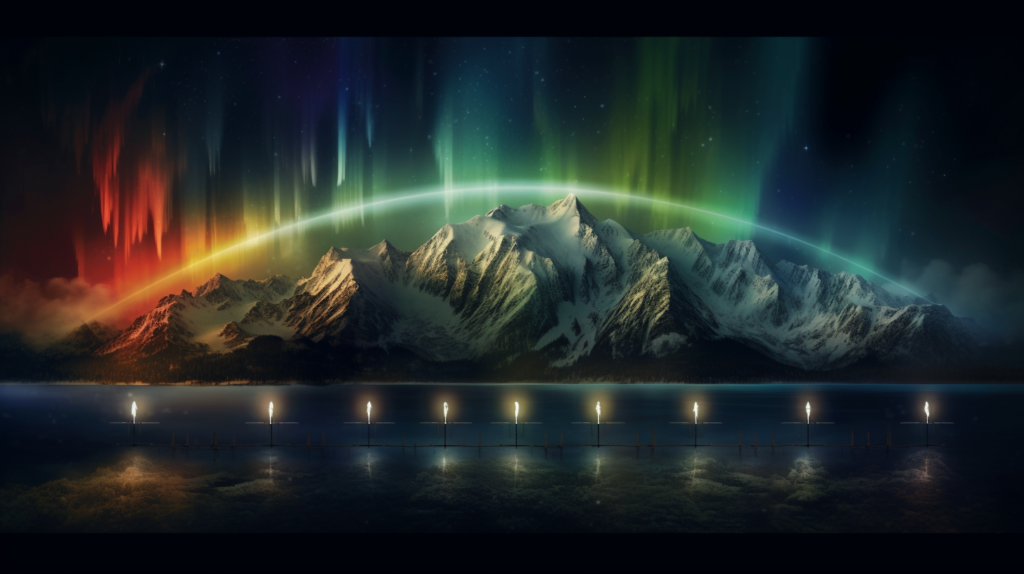
The northern lights are caused by charged particles from the sun interacting with gases in Earth’s atmosphere near the north pole. Here’s a quick overview of what causes this stunning celestial display:
- The sun ejects a stream of charged particles called the solar wind
- When the solar wind reaches Earth, some particles enter the upper atmosphere near the poles
- The particles collide with gases like oxygen and nitrogen
- These collisions release photons that create visible light in many colors
Key colors and what causes them:
| Color | Cause |
|---|---|
| Green | Oxygen atoms/molecules at 60 mile altitude |
| Red | Oxygen above 150 miles |
| Blue | Oxygen at 400+ miles |
| Purple | Nitrogen molecules |
Where To See the Northern Lights
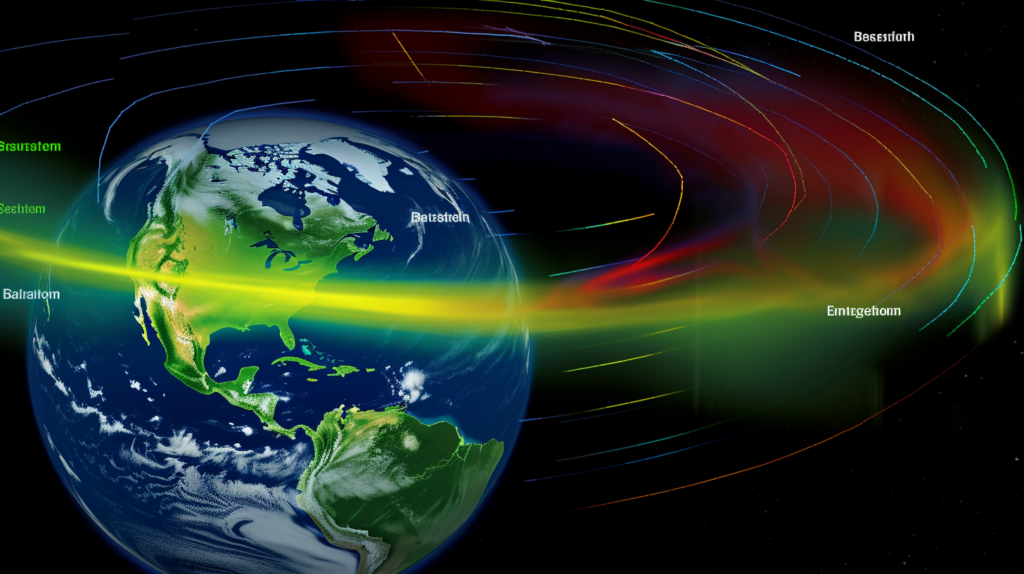
The northern lights occur in an “auroral oval” near the magnetic poles. The best viewing locations include:
- Iceland – Can sometimes be seen from Reykjavik
- Norway – Tromsø, Bergen, Svalbard
- Finland – Rovaniemi, Saariselka
- Sweden – Abisko National Park
- Alaska, USA – Fairbanks, north of Arctic Circle
- Canada – Yellowknife, Yukon Territory
When To See the Northern Lights
The best times for northern lights viewing:
- Winter months – September to March
- Solar maximum years – Increased activity, next peak 2024-2027
- Nighttime hours – Lights occur year-round but only visible after sunset
- Clear, dark skies – Moon phases, weather, light pollution affect visibility.
Ancient History and Myths
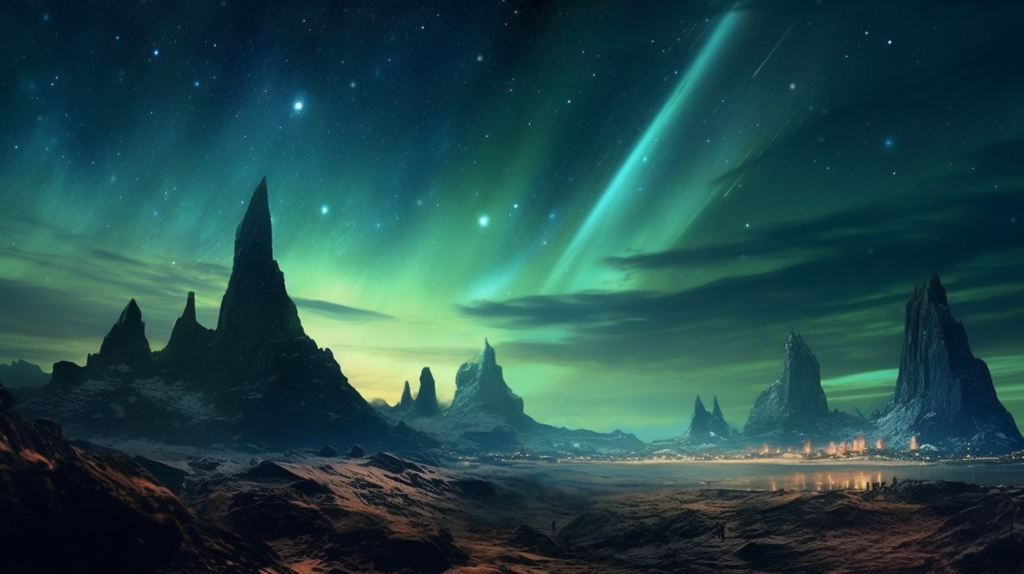
Early Observations
The aurora borealis has fascinated humans across cultures for millennia. Some of the earliest records of the celestial lights include:
- 30,000 year old cave paintings in France possibly depicting the aurora
- 567 BC tablet from Babylon describing a “red glow in the sky”
- 193 BC chronicle from China documenting the phenomenon
- Galileo coining the name “aurora borealis” in 1619
Myths and Legends
Ancient societies from different corners of the world have long attempted to make sense of the breathtaking phenomenon known as the Northern Lights or Aurora Borealis. These awe-inspiring displays of lights in the night sky left many intrigued, leading various cultures to create their own myths and legends surrounding them.
In Norse mythology, the Vikings believed that the Northern Lights were reflections of Valkyrie armor as they rode across the heavens. These warrior spirits were said to select brave warriors who had fallen in battle, bringing them to Valhalla for eternal glory.
North American indigenous communities also introduced their unique interpretations of this celestial spectacle. According to some Native American stories, the Northern Lights were seen as spirits playing ball in the sky, illuminating distant lands with their ethereal glow.
Among Aboriginal Australian tribes, these mystical lights were thought to be fires lit by spirits in the heavens. These fiery dances high above symbolized significant events and conveyed messages from ancestors.
Science of the Aurora
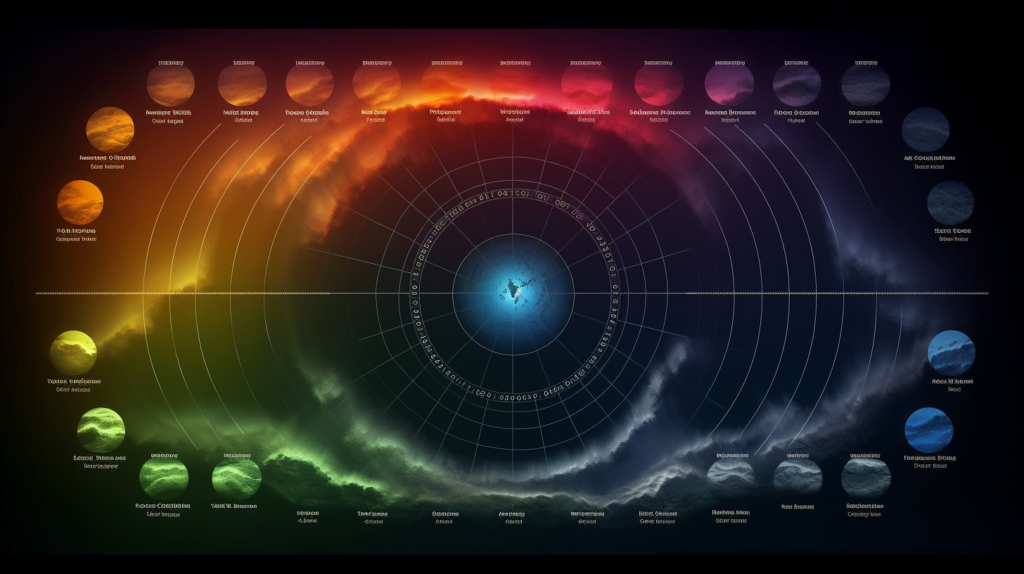
Early Theory
In 1917, the scientist Christian Bircland initially theorized that the particles of the solar wind that passes our solar system caused the northern radiance.
Modern Understanding
Today, we are fortunate enough to understand that these extraordinary light shows occur when charged particles from the sun collide with atoms in Earth’s atmosphere. Birkeland’s theory forms the core of our modern scientific understanding, which has expanded to uncover more details:
- Charged particles in solar wind get channeled by Earth’s magnetic field toward the poles
- The particles collide with gases in the upper atmosphere, exciting the atoms
- Relaxing atoms release energy as visible light
- Different gases and altitudes create the colors
- Activity follows the ~11 year solar cycle, increasing near solar maximum
Some mysteries linger, like exactly how particles speed up to such high velocities. But science continues to reveal the wonder of the aurora.
Viewing Tips and Techniques
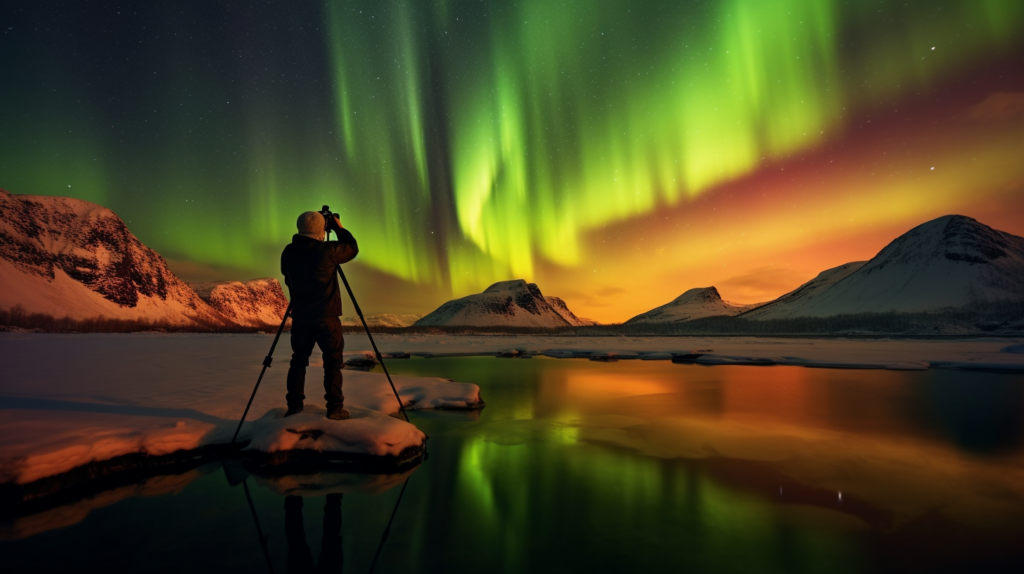
To maximize sightings of the elusive and ephemeral aurora, keep these tips in mind:
- Seek out dark skies away from light pollution
- Orient yourself north, but scan all over
- Allow 20-30 minutes for eyes to adjust to darkness
- Use a tripod and set camera for long exposure photography
- Dress very warmly and move around
Patience and persistence are key when aurora hunting. The lights can appear at any moment and move quickly across the entire sky. Prepare to wait and keep gazing upward.
Aurora in Culture
The mystical beauty of the northern lights has inspired art and culture across northern latitudes:
- Orchestral works like Sibelius’ “Night Ride and Sunrise”
- Paintings such as Frederic Church’s “Aurora Borealis”
- Films like “Borealis” dramatizing an aurora viewing trip
- Travel posters luring visitors to Scandinavia to see the lights
- Stamps, advertisements, tourism campaigns promoting the aurora
The allure of the aurora borealis continues to spark creativity and draw crowds yearning for a glimpse of its splendor.
Planning Aurora Expeditions
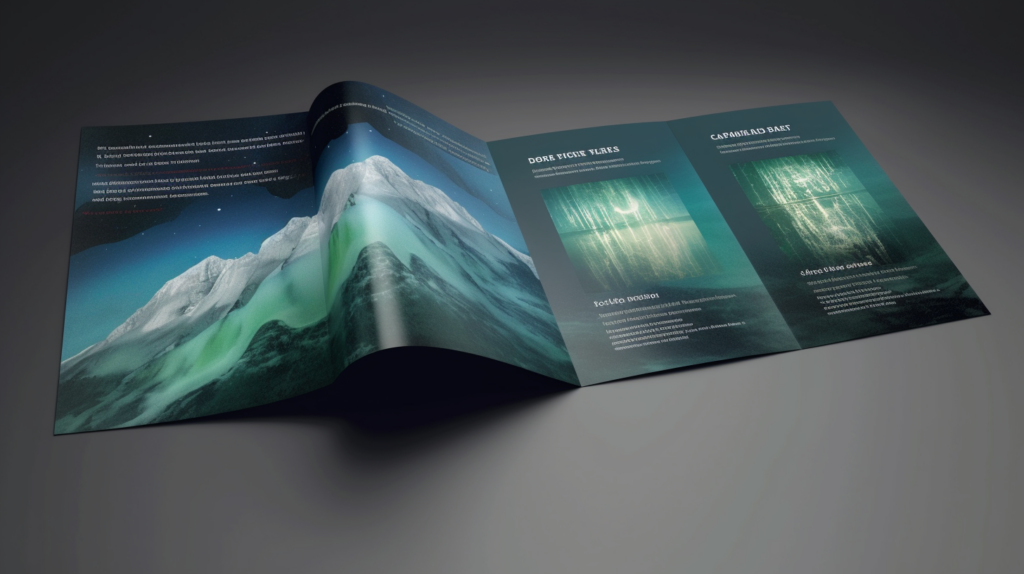
With smart preparation and planning, you may be rewarded with an encounter with the magical glow of the aurora borealis:
- Research locations and lodges within the auroral oval
- Book hotels offering northern lights wake-up calls
- Choose trips with flexible dates for good weather
- Look for tours providing transportation to viewing spots
- Reserve photography-focused northern lights excursions
- Pack warm clothing, eye masks, and battery packs
Seeing the northern lights is an experience like no other. With some planning and a dose of luck, it can become a reality.

